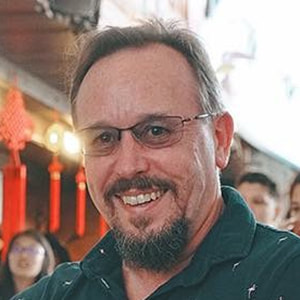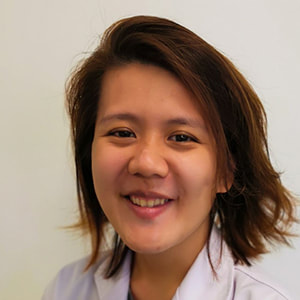The talk by Jiah Shin CHIN was not recorded.
Abstract
The skin is the largest organ of our body and it plays a vital role in protecting us from the outside world. If it is damaged it is essential to repair it quickly to prevent infections. This normally happens without any problems in four overlapping phases: haemostasis, inflammation, granulation tissue formation and tissue remodelling. However, in the elderly and diabetics this process can fail and get stuck in the proinflammatory phase for months or years. These chronic wounds are very costly for the healthcare services and debilitating for patients who often end up with lower limb amputation. The aim of our research is to find a way to break the proinflammatory cycle and kick start the healing process in these chronic wounds.
The skin is the largest organ of our body and it plays a vital role in protecting us from the outside world. If it is damaged it is essential to repair it quickly to prevent infections. This normally happens without any problems in four overlapping phases: haemostasis, inflammation, granulation tissue formation and tissue remodelling. However, in the elderly and diabetics this process can fail and get stuck in the proinflammatory phase for months or years. These chronic wounds are very costly for the healthcare services and debilitating for patients who often end up with lower limb amputation. The aim of our research is to find a way to break the proinflammatory cycle and kick start the healing process in these chronic wounds.
Bio
Professor David Becker obtained his BSc in Biology in 1985 and his PhD in 1988 at University College London. In 1994 he was awarded a Royal Society Research Fellowship and in 2008 was made full Professor at UCL. In 2013 he moved to Singapore to join the newly formed Lee Kong Chian School of Medicine at Nanyang Technological University, Singapore. He has published 130 research articles and book chapters, with >5000 citations and a Publication H-Index of 42 and acts as a reviewer for many international journals and international grant funding agencies. For his translational research he has 32 worldwide patents pending and granted. In 2006 he was a founding scientist of CoDaTherapeutics Inc, (now Ocunexus) to develop Nexagon, a drug, which promotes wound healing in skin and cornea.
Professor David Becker obtained his BSc in Biology in 1985 and his PhD in 1988 at University College London. In 1994 he was awarded a Royal Society Research Fellowship and in 2008 was made full Professor at UCL. In 2013 he moved to Singapore to join the newly formed Lee Kong Chian School of Medicine at Nanyang Technological University, Singapore. He has published 130 research articles and book chapters, with >5000 citations and a Publication H-Index of 42 and acts as a reviewer for many international journals and international grant funding agencies. For his translational research he has 32 worldwide patents pending and granted. In 2006 he was a founding scientist of CoDaTherapeutics Inc, (now Ocunexus) to develop Nexagon, a drug, which promotes wound healing in skin and cornea.
Abstract
Currently, there is no robust animal model that mimics a human chronic wound. Many drugs investigated in animals have failed to achieve significant impacts in clinical trials. The FDA-approved model for diabetic wound healing is the streptozotocin (STZ)-induced wound model. However, healing is only delayed by 2 or 4 days, in rats and pigs respectively, and these wounds lack features that recapitulate human chronic wounds. Here, we developed and characterized a perturbed wound model, in both rats and pigs, that is induced by large electrospun scaffolds, made of Polycaprolactone with 20% collagen type 1, pre-soaked in senescence-inducing drug, FK866. These scaffolds were left in situ for at least 5 days before removal to examine the characteristics of wound healing. The use of this scaffold caused chronic inflammatory reaction, stalled re-epithelization with hyper-thickening at the wound edge and hindered wound closure. In addition, we observed significantly sustained senescent cell population in and around the wound bed, degradation of wound edge extracellular matrix, along with over expression of Connexin 43, a GAP junction protein involved with the wound healing process. This refined model serves as a more relevant test bed for future development of therapeutics that can help improve chronic wound healing.
Currently, there is no robust animal model that mimics a human chronic wound. Many drugs investigated in animals have failed to achieve significant impacts in clinical trials. The FDA-approved model for diabetic wound healing is the streptozotocin (STZ)-induced wound model. However, healing is only delayed by 2 or 4 days, in rats and pigs respectively, and these wounds lack features that recapitulate human chronic wounds. Here, we developed and characterized a perturbed wound model, in both rats and pigs, that is induced by large electrospun scaffolds, made of Polycaprolactone with 20% collagen type 1, pre-soaked in senescence-inducing drug, FK866. These scaffolds were left in situ for at least 5 days before removal to examine the characteristics of wound healing. The use of this scaffold caused chronic inflammatory reaction, stalled re-epithelization with hyper-thickening at the wound edge and hindered wound closure. In addition, we observed significantly sustained senescent cell population in and around the wound bed, degradation of wound edge extracellular matrix, along with over expression of Connexin 43, a GAP junction protein involved with the wound healing process. This refined model serves as a more relevant test bed for future development of therapeutics that can help improve chronic wound healing.
After completing her degree in Biomedical Engineering at Nanyang Technological University (NTU) in 2016, Jiah Shin was awarded a Ph.D. scholarship from the Interdisciplinary Graduate School, NTU to further her interest in biocompatible material engineering. She was co-supervised by Associate Professor Chew Sing Yian and Professor David Becker during her studentship where she designed and engineered scaffolds for both neural and dermal regeneration. During the course of her thesis, she also developed non-viral delivery platforms for small molecules and nucleic acids that serve as therapeutics to enhance and promote tissue repair. As a post doctorate, she is currently developing in vivo models that mimic human chronic wounds and involved in the testing of various therapeutics with this newly developed model. She is also working with various collaborators to deliver wound healing therapeutics via dressings and dermal substitutes.
Chairs
Leah VARDY, SRIS
Srikala RAGHAVAN, SRIS
Leah VARDY, SRIS
Srikala RAGHAVAN, SRIS


